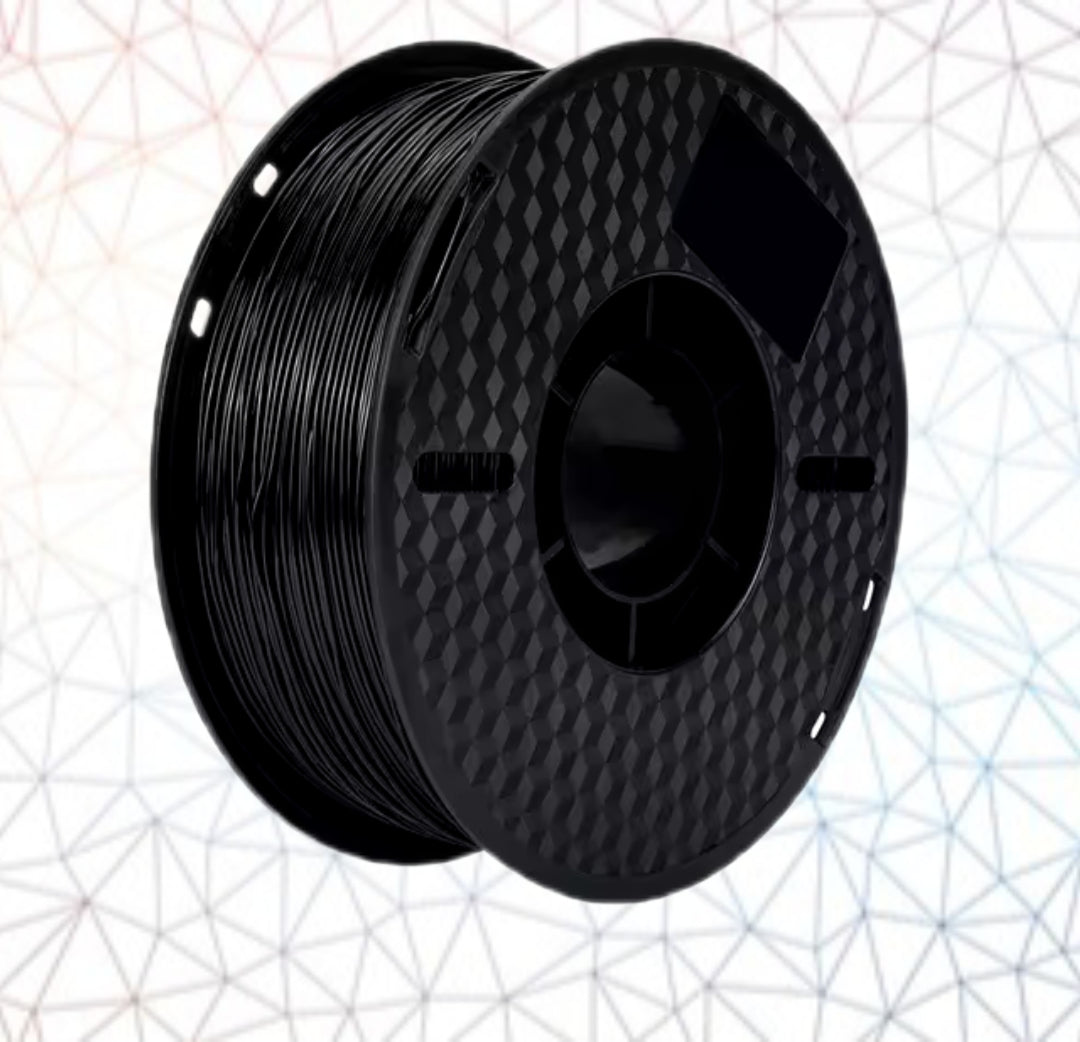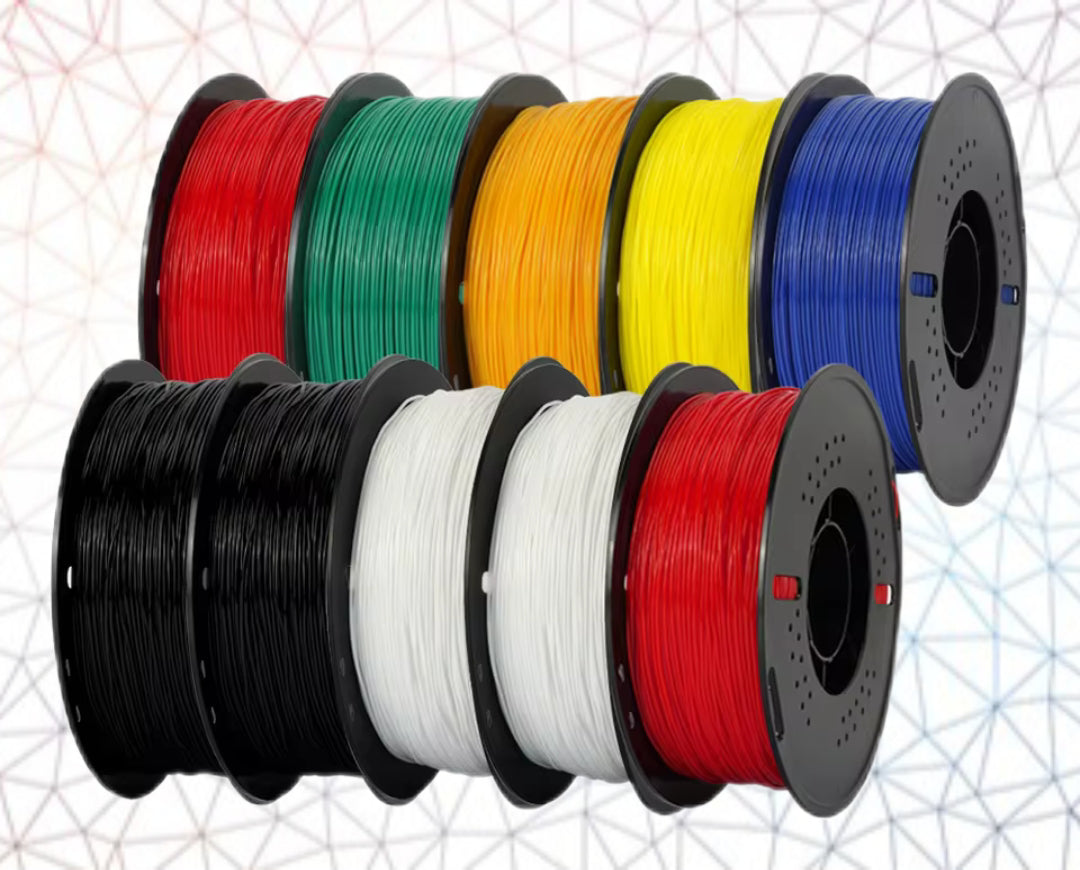Kingroon 3D filament TPU 95A
Kingroon 3D filament TPU 95A
TPU (Thermoplastic Polyurethane) filament is a flexible and elastic material used for 3D printing, especially when flexibility, stretchability and shock resistance are important. Here are the main properties of TPU filament:
Flexibility and Elasticity
Flexible and Stretchable: TPU is one of the most flexible filaments available for 3D printing. It can easily bend and stretch without breaking, making it ideal for applications such as phone cases, shoe soles, rubber-like parts, and shock absorbers.
Elasticity: TPU can be stretched significantly and then returns to its original shape without deformation.
Shock and wear resistance
Shockproof: Due to its elasticity, TPU absorbs shocks very well, making it ideal for applications that require cushioning, such as sports equipment, protective cases and bumpers.
Wear-resistant: TPU is highly wear-resistant, meaning it is resistant to friction, scratches and wear. This makes it a suitable material for moving parts or parts that are frequently touched.
Chemical Resistance
TPU is resistant to a wide range of oils, greases, solvents and chemicals, making it suitable for industrial applications where exposure to these substances is a factor.
Weather resistance
UV and Ozone Resistant: TPU has good resistance to UV rays and ozone, which means it is suitable for outdoor applications as it will not degrade quickly under the influence of sunlight or other environmental factors.
Water Resistance: TPU is resistant to moisture and can come into contact with water without degrading, making it suitable for wet environments.
Strength and Durability
Strong yet flexible: TPU combines strength with flexibility. It can carry high loads without breaking, yet remains flexible enough to bend or stretch.
Tear Resistance: TPU is less susceptible to tearing or cracking compared to rigid materials such as PLA or ABS.
Temperature resistance
TPU has good temperature resistance and can withstand temperatures up to around 80-100 °C. While this is lower than some other filaments such as ABS, it is high enough for many everyday applications.
Printability
Printing Challenges: TPU can be more difficult to print than rigid filaments like PLA. Its flexibility can cause issues such as clogging the extruder or not fitting properly in the filament feeder. It usually requires a lower print speed (around 20-30 mm/s) and specific adjustments to the 3D printer.
Temperature and heated bed: TPU is usually printed at temperatures between 210-240 °C. A heated bed of around 40-60 °C is recommended to prevent warping.
Adhesion and Shrinkage
TPU generally has good adhesion properties to the print bed and between layers, which reduces the occurrence of warping. Shrinkage is also usually minimal compared to materials such as ABS.
Applications of TPU
Flexible Parts: TPU is ideal for parts that need to be flexible, such as shoe soles, wristbands, phone cases and rubbery seals.
Shock Absorption: Due to its shock absorbing properties, it is often used in protective applications such as bumpers, covers and shock absorbers.
Industrial applications: It is also used for parts that must be resistant to chemicals, wear and weathering, such as in the automotive industry and machine parts.
Summary
TPU filament offers exceptional flexibility, stretchability, shock resistance and abrasion resistance, making it ideal for applications where elastic and durable properties are required. Although more difficult to print than rigid materials, it offers unique advantages for functional and protective parts.
TPU Filament Specifications:
Wire diameter: 1.75 mm
Tolerance: ±0.05 mm
Nozzle temperature: 190-220 ℃
Bed temperature: 60-80℃
Melting point: 140℃
tensile strength to break: 450kg/cm²
bending strength to break: 400kg/cm²
Print speed: 15-90MM/s
Net weight: 1 kg/roll
Shore hardness: 95A
Share








Goede kwaliteit en makkelijk te printen.
Print toch wel makkelijk weg.


